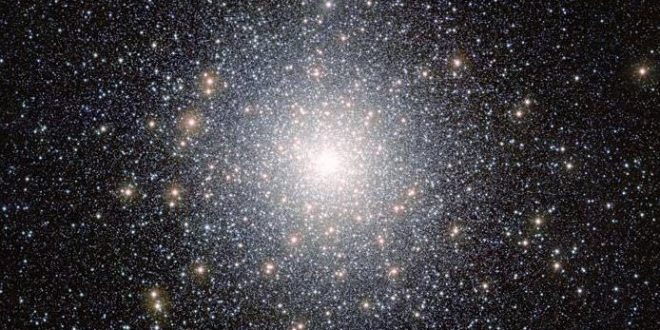Astronomers may have discovered the first example of an intermediate-mass black hole, possibly validating a long-standing theory that such “mid-sized” black holes exist.
University of Queensland School of Mathematics and Physics researcher Associate Professor Holger Baumgardt said all known black holes fell into two categories: small, stellar-mass black holes weighing a few times the mass of our sun, and supermassive black holes weighing millions or billions of times that.
“Astronomers expect that intermediate-mass black holes weighing 100 to 10,000 times the mass of our sun also exist, but until now no conclusive proof of such middleweights has been found,” he said.
Associate Professor Baumgardt did computer simulations used in the research project led by Dr Bulent Kiziltan of the Harvard-Smithsonian Center for Astrophysics.
Dr Kiziltan said intermediate-mass black holes were the missing link between stellar-mass and supermassive black holes.
“They may be the primordial seeds that grew into the monsters we see in the centers of galaxies today,” he said.
Dr Kiziltan said black holes were regions of space time exhibiting such strong gravitational effects that nothing could escape from inside them.
The intermediate-mass black hole announced today in Nature has 2200 times the mass of our sun and hides at the centre of the 12-billion-year-old globular 47 Tucanae star cluster, 13,000 light years from Earth in the southern constellation of Tucana the Toucan.
The 47 Tucanae cluster contains three millions stars in a sphere about 120 light-years in diameter. It also holds about two dozen pulsars that were important targets of this investigation.
In their paper, the researchers said 47 Tucanae had been examined previously for a central black hole, without success.
Dr Kiziltan said in most cases a black hole was found by looking for x-rays emanating from a hot disk of material swirling around the black hole. This method only works if the black hole is actively feeding on nearby gas.
“The centre of 47 Tucanae is gas-free, effectively starving any black hole that might lurk there,” he said.
“A supermassive black hole at the centre of the Milky Way gives clues to its presence by its influence on nearby stars.
“Years of infrared observations have shown a handful of stars at our galactic centre whipping around an invisible object with a strong gravitational tug.
“But the crowded centre of 47 Tucanae makes it impossible to watch the motions of individual stars.”
The new research relied on two lines of evidence. The first is overall motions of stars throughout the cluster.
Dr Baumgardt said that a globular cluster’s environment was so dense that heavier stars tended to sink to the centre of the cluster.
“An intermediate-mass black hole at the cluster’s centre acts like a cosmic “spoon” that stirs the pot, causing the stars near it to slingshot to higher speeds and greater distances, imparting a subtle signal that astronomers can measure,” he said
By employing computer simulations of stellar motions and distances, and comparing them with visible-light observations, the team found evidence for just this sort of gravitational stirring.
Dr Baumgardt said the second line of evidence came from pulsars, compact remnants of dead stars whose radio signals were easily detectable.
These objects were also flung about due to the gravitational influence of the central intermediate-mass black hole, causing them to be found at greater distances from the cluster’s centre than would be expected if no black hole existed.
Combined, this evidence suggested the presence of an intermediate-mass black hole of about 2200 solar masses within 47 Tucanae.
The fact this black hole had eluded detection for so long suggested black holes of similar masses could be hiding in other globular clusters.
Agencies/Canadajournal
 Canada Journal – News of the World Articles and videos to bring you the biggest Canadian news stories from across the country every day
Canada Journal – News of the World Articles and videos to bring you the biggest Canadian news stories from across the country every day



